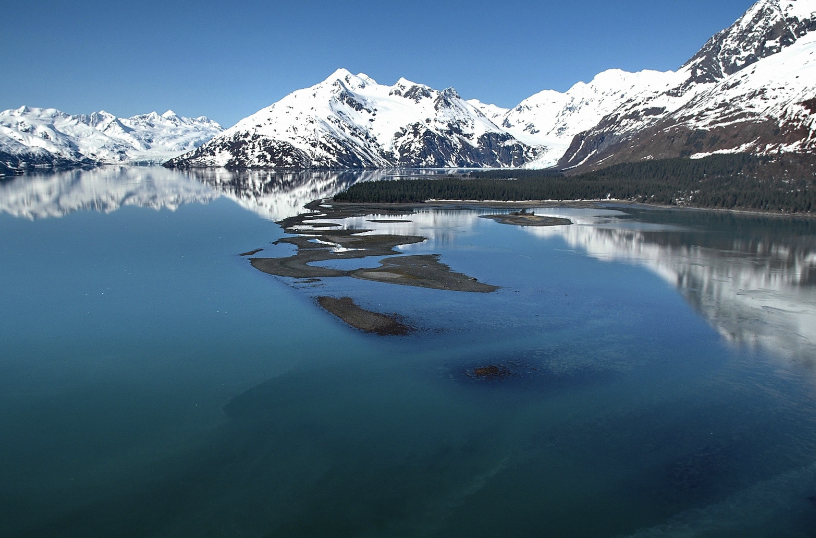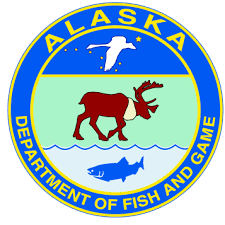This summer, I had the amazing opportunity to work as a Roving CREEL Technician in Southeast Alaska with the Alaska Department of Fish and Game (ADFG). I had the privilege of traveling to Juneau, Petersburg, Yakutat, and Hoonah for work and explored the beauty of Alaska all while working and gaining field experience. In addition to being a CREEL tech, I also was asked to spend two weeks in Hoonah working with the habitat-division doing anadromous (combination fresh and saltwater) stream surveys.



What is the big deal with CREEL?
CREEL projects are a survey method where a stationed technician at a harbor or launch ramp interviews anglers when they return after their fishing trip. Information asked of the anglers are things such as: the number and type of fish species caught, where anglers were fishing, as well as what species were kept/released. Biological samples and measurements of the catches are recorded when necessary. This large-scale project is part of the Marine Harvest Stud in Southeast Alaska, which helps management-focused biologists gather data to represent the number of fish that are in populations around the area. This collection of data is a major influence in determining catch limits and regulations for various species. The Marine Harvest Study is a major deal each summer—in part because of the local regulation determination, but also because salmon are managed under a treaty with Canada, as they spawn and spend their first two years of life in freshwater streams, some of which travel across the Canada/US border.

I spent much of the summer in Petersburg AK, which is also known as Little Norway because of its Norwegian influence. Petersburg is a small town built around the commercial fishing industry and has grown in sport fishing popularity. I worked under the Sport Fish Division, so I did not engage in commercial catches as they had a whole different division that samples them. The major fishing targets around Petersburg are Chinook (King) and Coho (Silver) salmon, Halibut, as well as some rockfish. Petersburg has a Chinook hatchery that broods and releases chinook salmon to help bolster the population for sustainable harvest. Some of these fish released from the hatchery get a tiny metal tag with a code that tells where they were raised and what batch they were part of injected into their nose.
When hatchery fish are tagged, the adipose fin (a vestigial flap of tissue between the dorsal and caudal tail) is removed to indicate it has a tag. These tags do not harm the fish as they are only 1mm, and are so small they can only be read under a microscope! During the CREEL project, technicians and anglers notice this missing adipose fin, and as a result know it is more than likely a hatchery fish with a tag. When the adipose fin is clipped, the CREEL tech asks the angler if they are okay with us taking the head from their fish. If allowed, we will send that salmon head to a lab to have that tag and its biological (bio) samples examined.


Bio samples are a major part of being a CREEL Tech. This part of the job is one of the major distinctions in having a technician on site versus just having anglers report catch numbers themselves. For Chinook, we collect scales which give us the age of the fish, a pelvic fin clipping which gives us some genetic information, and lengths. When the Chinook has a clipped adipose fin, we ask the angler if they are alright with us collecting the head. For Halibut, we only collect lengths—which also give us the weight as halibut usually follow a similar weight to length distribution across the species. With Rockfish, we collect lengths on all that come in. For species that are of higher conservation concern, we may collect more bio samples if needed.

So that is the general idea behind the CREEL work I did this summer. I also happened to do stream surveys! Alaska has well over 20,000 streams and other bodies of water that are believed to be habitat for rearing salmonids (e.g. salmon, trout)! The habitat section of the Department of Fish and Game is the amazing team responsible for venturing out into the wilderness and surveying all of these streams, tributaries, and other various bodies of water to see what species of fish inhabit them. The team takes a drone equipped with LiDAR (and flies it over areas of land and then uses GIS to create a geographical map of all these bodies of water. Sounds like a fun easy job, right? Well, that’s not all! A field team is deployed once the map is created to each of the water bodies where technicians will then examine the streams for species using electro-fishing backpacks, or eFishers (see image on right), and barrier surveys. If you haven’t been to Southeast Alaska, the region is a collection of mountainous islands with rough terrain, so trekking out to streams is not always an easy task. Some streams are near towns or old logging roads that provide access to them, but others require more creative methods to get to them. The island that the team primarily focused on this summer was Chichagof Island. Some areas were major logging operations in past years with old roads still intact, but only accessible by water. A landing craft was used to carry staff, gear, and all-terrain vehicles (ATVs) across the marine waters from Hoonah. After the fun 4-wheeler ride, the bushwhacking begins. Southeast Alaska is a temperate rainforest and has an abundance of plant life that thrives in the highly moist environment. Much of the plant life is just like you’d see in other temperate biomes, but with a lot of moss and fungi and one plant that is the bane of any bushwhacker.

Devil’s club (Oplopanax horridus, see image on left) is a plant covered in prickles that is often in just the right place for you to grab when falling or sliding in the damp environment. Speaking from experience…not a fun plant.
Anyway, back to the technical stuff.
After arriving to a stream, we take the roughly 40 lb. eFisher backpack and use it to shock sections of water, stunning fish with anywhere from 100-800 volts. The fish free-float when shocked, and are scooped into a net for species identification. We compiled the coordinate points of locations where we did this on a GIS-program (geographic information services) map and listed qualities of the stream and the species visible.
Sometimes, we found logjams or waterfalls that are considered a barrier to young fish, as they keep them from traveling upstream to complete their lifecycle. After each season of summer field-work, the ADFG habitat team writes up nominations based on the collected data from the surveys to then choose to add, modify, or remove water-bodies from the Anadromous Waters Catalogue (AWC). This catalogue is used to guide survey development, fisheries management, and a myriad of other influences on these streams and the various anadromous fish populations within them.

Now with all the long, tedious, labor-intensive, and large-scale work involved with this project, you would think there is a massive team going out to work on this; right? I mean, there are over 20,000 water bodies after all. Instead of a large task force, this program is powered by a team of roughly 10 people or so. Before I joined this team for 2 weeks at the end of the summer (this year’s season began in June for them), I was under the impression that they went out in these nice, beautiful easy-to-access streams you see people in movies and commercials fly-fishing in. When I experienced the rough terrain these folks go through every day for 4 months of the year, sometimes 6 days a week at 12-hour days, I encountered a big shock. I have the utmost respect for the work and effort the ADFG habitat section puts into their work because it is not an easy job and it’s a very important one that much of the rest of Fish and Game relies on. I used to think when crossing a trickle of water an inch or two deep, and maybe a foot wide, that there was no way fish could be living in it. Well, working on this project proved me very wrong! It is incredible what types of aquatic habitats young salmonids can survive in. We even found them living in a hot-spring where the water was 90+ degrees Fahrenheit.
Alaska was my first job in the field of wildlife, fisheries, and natural resource management. Trough this experience, I learned so many things that will help me in my career and life far into the future. I am extremely grateful to the staff at Alaska Department of Fish and Game that decided to take a chance on hiring the recent-graduate from way down in Alabama. I remember in an early-on interview, when asked what I knew of Alaska, I said I was only familiar with what you see in movies and tv, and knew little to nothing about salmon. I went in knowing little about the area and their fisheries, but was provided lots of help and mentorship by supervisors, coworkers, and the public that I worked with on a daily basis. I met some great people both in the management side as well as the angler and sport fishing business along the way, and hope that I was able to benefit the fisheries data of Southeast Alaska during my time there.